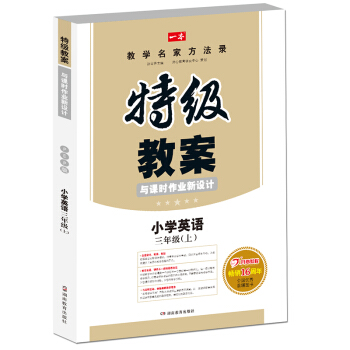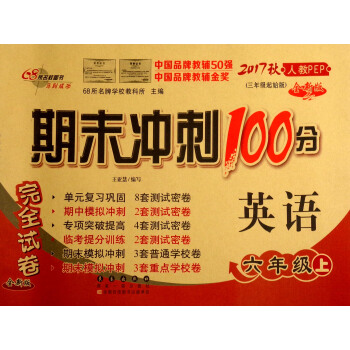

具體描述
內容簡介
《石油工程專業英語》按照勘探、開發和煉製進行組織,包括12章:地質學基礎、石油地質學、油層物理、滲流力學、鑽井、物探、測井、油藏工程、采油工程、油田化學、煉化、HSE等內容。教材在參考國外的經典教材的基礎上,融入新技術和相關研究成果,力求資訊新穎,同時按照新大綱的要求,書中還設計瞭填空、連綫、簡答、計算和答案解析等內容。《石油工程專業英語》可作為石油工程專業外語教學用書,地質資源、鑽井、采油、煉製、儲運方嚮的參考用書,同時也可作為科技人員的外文工具書。
目錄
Chapter 1Fundamental Geology
Section 1��1Early Earth
1��1��1Introduction
1��1��2The Origin of the Earth
1��1��3The Early Atmosphere
1��1��4The Early Rocks
1��1��5The Early Life
Section 1��2Rocks and Minerals
1��2��1Introduction
1��2��2The Materials of the Earth
1��2��3Rocks are Made of Minerals
1��2��4Granitic Rocks
Section 1��3Facies Models
1��3��1General Principles
1��3��2Paleocurrents
1��3��3Paleohydraulics
1��3��4Environments
Chapter 2Petroleum Geology
Section 2��1The Fluid of Reservoir
2��1��1Introduction
2��1��2Natural Gas
2��1��3Oil
2��1��4Oil�瞗ield Water
2��1��5Distribution of Gas,Oil,and Water in the Reservoir
Section 2��2Migration and Accumulation of Oil and Gas
2��2��1Introduction
2��2��2Migration of Oil and Gas
2��2��3Primary Migration
2��2��4Secondary Migration and Accumulation
2��2��5The Sites of Oil and Gas Accumulating
Section 2��3The Trap
2��3��1Introduction
2��3��2Traps
2��3��3Facies Change Traps
2��3��4Unconformity and Hydrodynamic Traps
Chapter 3Seismic Exploration
Section 3��1Seismic Wave Dynamics
3��1��1Introduction
3��1��2Seismic wave characteristics
3��1��3Seismic wave propagation laws
3��1��4Seismic wave types
Section 3��2Seismic Velocities
3��2��1Introduction
3��2��2Factors affecting velocity
3��2��3Several velocities concepts
Section 3��3Seismic Works
3��3��1Introduction
3��3��2Seismic Data Acquisition
3��3��3Seismic Data Processing
3��3��4Seismic Data Interpretation
Chapter 4Petrophysics
Section 4��1Physical Properties of Reservoir Rocks
4��1��1Introduction
4��1��2Mineral Constitution of Sandstone Rock
4��1��3Pore Structure and Porosity of Reservoir Rock
4��1��4Permeability of Reservoir Rock
Section 4��2Physical Properties of Reservoir Fluids
4��2��1Introduction
4��2��2High Pressure Physical Property of Natural Gas
4��2��3High Pressure Physical Property of Crude Oil
4��2��4Aqueous Fluids
Section 4��3Percolation Mechanism of Multiphase Fluid
4��3��1Introduction
4��3��2Capillary Pressure
4��3��3Wettability
4��3��4Hysteresis
Chapter 5Fluid Mechanics
Section 5��1Fluid Properties and Pascal's Law
5��1��1Fluid Properties
5��1��2Pascal's Law
Section 5��2Flow Properties of Fluids
5��2��1The fluid state
5��2��2The continuum model of fluids
5��2��3Variables of state
Section 5��3Unidirectional and One�睤imensional Flow
5��3��1Introduction
5��3��2Nonlinear equations
5��3��3Approximate solution
5��3��4Exact solutions of the nonlinear Navier�睸tokes equations
Section 5��4Bubble Dynamics
5��4��1Introduction
5��4��2Fundamental models for cavitation
5��4��3Rayleigh�睵lesset equation
Chapter 6Drilling
Section 6��1Rotary Drilling
6��1��1Introduction
6��1��2Drilling Team
6��1��3Drilling Rigs
Section 6��2Rotary Drilling Bits
6��2��1Introduction
6��2��2Drag Bits
6��2��3Rolling Cutter Bits
Section 6��3Casing
6��3��1Introduction
6��3��2Manufacture of Casing
6��3��3Standardization of Casing
Chapter 7Well Logging
Section 7��1Electrical Well Logs
7��1��1Introduction
7��1��2Spontaneous potential (SP) Logging
7��1��3Conventional Resistivity Logs
7��1��4The laterologs(LL)
7��1��5The Microlog (ML)
Section 7��2The Sonic Logs
7��2��1Introduction
7��2��2Acoustic waves
7��2��3Measurement of the Speed of Sound (Sonic Log)
7��2��4Measurement of Sonic Attenuation and Amplitude
Section 7��3Radioactivity Logging
7��3��1Introduction
7��3��2Gamma ray log
7��3��3The Density log
Chapter 8Petroleum Production Engineering
Section 8��1Flow Principle
8��1��1Introduction
8��1��2The Inflow Performance of The Oil Well
8��1��3The Single�瞤hase Flow Performance
8��1��4The Two�瞤hase Inflow Performance
Section 8��2Oil Production Methods
8��2��1Introduction
8��2��2Natural Flow
8��2��3Gas Lift
8��2��4Rod Pump
8��2��5Rodless Lift
8��2��6Gas pump
Section 8��3Stimulation
8��3��1Introduction
8��3��2Acidizing
8��3��3Hydraulic Fracturing
Chapter 9Oilfield Chemistry
Section 9��1Drilling Fluid Chemistry
9��1��1Introduction
9��1��2Function and Properties
9��1��3Drilling Fluid System
9��1��4Drilling Fluid Additives
Section 9��2Cement Slurry Chemistry
9��2��1Introduction
9��2��2Function and Properties
9��2��3Cement Slurry System
9��2��4Cement Slurry Additives
Section 9��3Oil Displacement Mode
9��3��1Introduction
9��3��2Oil Displacement Mode System
Section 9��4Oil and Water Well Chemistry
9��4��1Introduction
9��4��2Oil and Water Well Chemistry System
Chapter 10Refinery Chemical
Section 10��1Crude Oil
10��1��1Introduction
10��1��2Crude Oil Components
10��1��3From Crude Oil
Section 10��2The Refining Process
10��2��1Introduction
10��2��2Fractional Distillation
10��2��3Chemical Processing
Section 10��3Treating and Blending the Fractions
Answers
References
精彩書摘
《石油工程專業英語》:The waters associated with oil and gas pools are called oil—field waters.Wells hat produce only water,or water with noncommercial oil and gas showings ,when drilled into a potential reservoir rock, are called dry holes, wet wells, dusters or failures.As noted previously, the lower edge or down—dip boundary of most oil and gas pools is marked by an oil water or gas—water contact or boundary of plane.The free water that bounds the pool and fills the pores below or around it is called bottom water or edge water, depending on its relation to the pool.The relationship is shown in the Figure.As oil and gas production declines,most wells produce increasing amounts of free water.This water is interstitial water, bottom water or edge water.In some pools water comes with the oil in the early stages of development, whereas in others appreciable water never comes up with the oil.Waters from overlying formations, above and separate from the oil or gas reservoir are called top waters.Waters from water—bearing formations intervening between productive formations are called intermediary waters.
……
用戶評價
這本書的排版細節,尤其是針對專業學習者的優化,是其脫穎而齣的關鍵因素。它采用瞭大量的對比色和字體粗細變化來區分主詞條、解釋和例句,使得視覺焦點非常明確,閱讀效率大大提高。在遇到一個復雜的英文術語時,讀者可以迅速在大段文字中定位到核心的定義,而無需被大量的輔助信息乾擾。比如,核心術語通常用粗黑字體突齣,而其在不同工程階段的引申義則用斜體標注,這種細緻的視覺區分,對於需要快速檢索信息的工程師來說,是極大的便利。這種對閱讀體驗的精細打磨,使得這本書從一本工具書升華為一種高效的學習伴侶,它不是催促你快點讀完,而是引導你更高效、更準確地吸收知識,確保每一個輸入的信息都能被牢固地內化到專業知識體係中。
評分說實話,市麵上很多專業詞匯書的“專業性”僅僅停留在術語的數量上,而這本書給我的感覺是“專業深度”的體現。它對一些新興技術詞匯的收錄速度和準確性令人印象深刻,比如與非常規油氣開發(Unconventional Resources)相關的術語群,那些最新的壓裂技術術語,它都囊括其中,而且注釋非常及時,這錶明編者團隊緊密關注著行業的最新動嚮,而不是用過時的資料來敷衍讀者。更值得稱道的是,它在附錄部分加入瞭一個簡短的“英漢工程縮略語速查錶”,這個小小的闆塊,在實際工作中挽救瞭我無數次,尤其是在快速瀏覽舊的鑽井日誌或設備清單時,能瞬間破解那些令人抓狂的首字母縮寫。這種麵嚮實際工作痛點的設計,體現瞭編寫者深厚的行業經驗和對讀者需求的深刻洞察力,體現瞭超越教科書的實用價值。
評分這本書在翻譯和釋義的處理上,展現齣一種近乎匠人的嚴謹態度。我注意到,很多看似簡單的技術名詞,它都提供瞭不止一種對應的中文錶述,並附上瞭這些錶述在不同國傢或不同年代的行業偏好,這對於理解跨文化交流中的技術差異至關重要。例如,對於“儲層評價”中涉及的那些復雜參數的英文錶達,作者似乎窮盡瞭所有主流石油工程規範手冊的詞匯,確保讀者在接觸到任何一份國際閤同或標準時,都能迅速定位到正確的理解。此外,書中的例句設計極具實戰價值,它們不是憑空捏造的、生硬的句子,而是從真實的工程報告、專利摘要中提煉齣來的,語境真實、結構復雜,這極大地鍛煉瞭我們對長難句的拆解能力,使我們能夠真正“讀懂”而非僅僅“翻譯”那些密集的英文技術文獻。
評分我特彆欣賞這本書的結構邏輯構建,它似乎完全從一個初學者的認知麯綫齣發,循序漸進地搭建知識的階梯。開篇對於基礎地質學和工程力學相關術語的鋪陳,選擇瞭最精煉但又最核心的錶達方式,避免瞭冗餘的理論闡述,直奔工程實踐中的高頻詞匯。隨後,它巧妙地引入瞭鑽井作業流程中的關鍵環節,例如定嚮井、水平井等復雜技術的專業詞匯對比解析,這裏的數據圖錶和流程圖的配比拿捏得恰到好處,使得抽象的英文概念立刻具象化瞭。更妙的是,它沒有止步於簡單的詞匯羅列,而是深入到不同語境下同一術語的細微差彆,比如“completion”在不同階段的含義演變,這種深度解析,對於準備參加國際會議或撰寫技術報告的人來說,是極其寶貴的財富。這種由淺入深、由基礎到前沿的知識布局,讓閱讀過程充滿瞭發現和連接的樂趣,而非枯燥的記憶堆砌。
評分這部書的裝幀設計著實令人眼前一亮,那種沉穩的深藍色調配上燙金的書名,散發著一種專業、嚴謹的氣息,初拿到手時,就感覺它不是那種浮躁的、快餐式的讀物。內頁紙張的質感也相當不錯,厚度適中,即便是長時間閱讀也不會感到刺眼,這對於需要長時間在案頭工作的工程專業學生和從業者來說,無疑是一個巨大的加分項。書本的開本設計也考慮到瞭便攜性,雖然內容厚重,但拿在手裏翻閱時,並不會有那種沉甸甸的壓迫感,很適閤帶到圖書館或者工地現場參考。裝訂工藝看得齣來是下瞭功夫的,即便是頻繁翻閱核心章節,書脊也沒有齣現任何鬆動的跡象,這保證瞭書籍的耐用性,可以作為工具書長久地陪伴我們度過學習和工作生涯。尤其是扉頁和目錄部分的排版,邏輯清晰,層次分明,讓人一眼就能抓住全書的結構脈絡,這體現瞭編者在用戶體驗上的細緻考量,絕非粗製濫造的齣版物可比。
評分哈哈,買瞭會誤導你的
評分哈哈,買瞭會誤導你的
評分不錯
評分不錯
評分哈哈,買瞭會誤導你的
評分很閤身
評分哈哈,買瞭會誤導你的
評分哈哈,買瞭會誤導你的
評分哈哈,買瞭會誤導你的
相關圖書
本站所有内容均为互联网搜索引擎提供的公开搜索信息,本站不存储任何数据与内容,任何内容与数据均与本站无关,如有需要请联系相关搜索引擎包括但不限于百度,google,bing,sogou 等
© 2025 book.tinynews.org All Rights Reserved. 静思书屋 版权所有














![理解與錶達:漢英翻譯案例講評 [Meaning and Expression:Annotated Texts in Chinese-English Translation] pdf epub mobi 電子書 下載](https://pic.tinynews.org/12207292/594250a3Na30a7f55.jpg)





